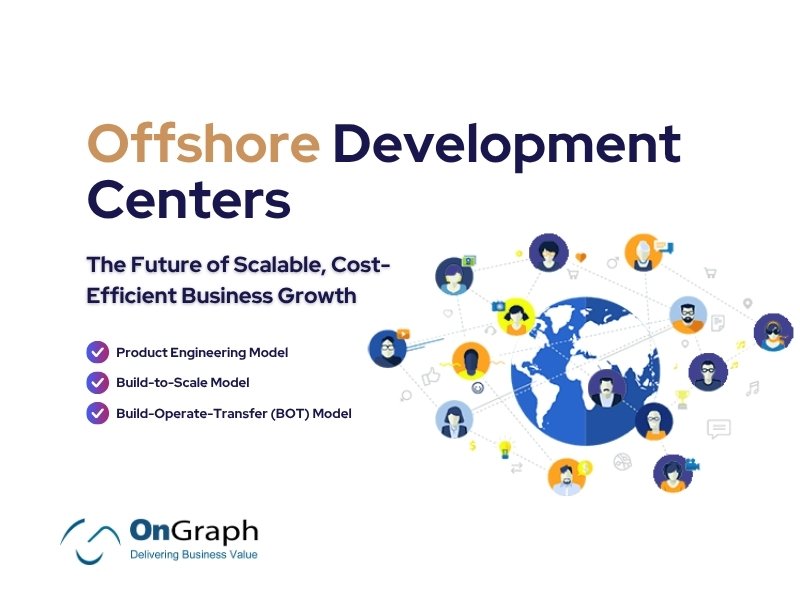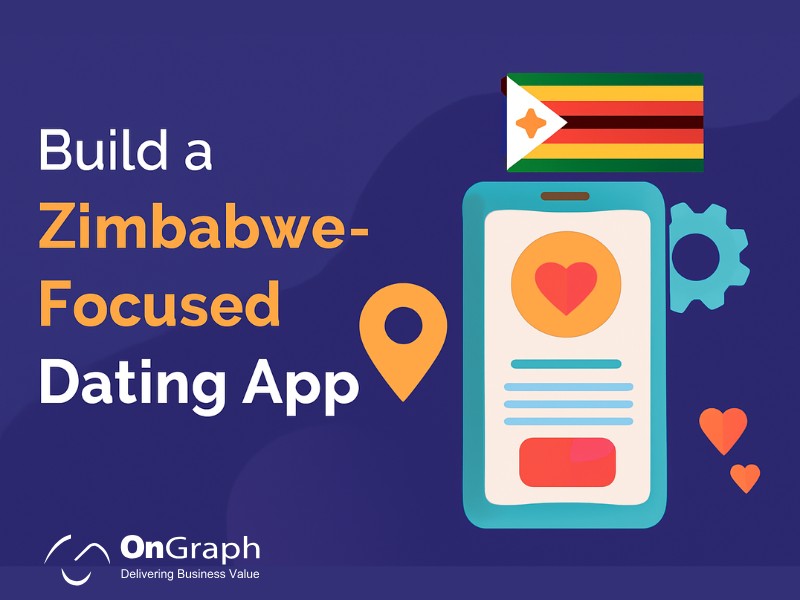In this article
- What is an Offshore Development Center (ODC)?
- ODC vs Outsourcing vs In-house — short comparison
- Cost model & sample TCO (realistic assumptions)
- 30-point setup checklist (fast, actionable)
- Knowledge transfer & onboarding — 30/60/90 day playbook
- Key KPIs & monitoring dashboard (must-track)
- Real-world case study (concise & measurable)
- Security, IP & legal checklist (short)
An offshore development center (ODC) is a dedicated, long-term remote team and infrastructure set up in another country to expand engineering capacity, often saving 30–60% on development costs while delivering continuous coverage and specialized skills.
ODCs work best for companies that need long-term scale, control over IP/security, and predictable capacity. This guide gives a step-by-step setup plan, KPI dashboard, a TCO example, and a real-world case study.
What is an Offshore Development Center (ODC)?
An offshore development center (ODC) is a dedicated team, office (or remote infrastructure), and operational support located in another country that acts as an extension of your in-house engineering organization.
Unlike transactional outsourcing, an ODC is long-term, integrated into your delivery processes, and often staffed exclusively for your product(s).
Common models include customer-owned ODC (you set up and own the entity) and vendor-owned / contractor ODC (a vendor runs the site and you consume services).
Primary benefit: long-term control + cost predictability while accessing global talent.
ODC vs Outsourcing vs In-house — short comparison
| Aspect | ODC (dedicated) | Traditional Outsourcing | In-house |
| Control | High | Low–Medium | Very High |
| Cost predictability | High | Variable | High (but higher absolute cost) |
| Time-to-start | Medium (4–12 weeks) | Fast (if vendor has resources) | Slow (recruiting) |
| Long-term commitment | Yes | Often no | Yes |
| IP & security | High (can be contractually protected) | Risk varies | Highest |
Choose an ODC if you meet most of these:
- Need predictable engineering capacity for 12+ months.
- Require deep integration with in-house product and IP protections.
- Want cost savings but not at the expense of control.
- Need specific skills not available locally.
- Planning continuous delivery or 24/7 support.
Relevant industry backdrop: talent shortages remain a top issue for tech leaders — nearly 90% of technology leaders say recruiting remains a moderate or major challenge. This strengthens the case for ODCs as a talent supply strategy.
Cost model & sample TCO (realistic assumptions)
Assumptions
- Onshore senior dev fully loaded cost (US market): $140k/year base ⇒ Total Employment Cost (TEC) ≈ $175k (salary + benefits + office + taxes).
- Offshore mid-senior dev base (India/Eastern Europe): $30k–$50k/year ⇒ TEC ≈ $40k–$60k.
- Vendor-managed ODC adds vendor fee (~15–25% of payroll) + office and admin.
Sample 3-year TCO (simplified)
| Item | Onshore team (3 devs, 3 yrs) | Offshore ODC (3 devs, 3 yrs) |
| Salaries + benefits | $525,000 | $135,000 |
| Office & infra | $60,000 | $24,000 |
| Recruitment & onboarding | $45,000 | $18,000 |
| Vendor/admin fees | — | $30,000 |
| Total (3 yrs) | $630,000 | $207,000 |
| Estimated savings | — | ~67% |
Note: Savings vary by location and model; industry guides show typical offshore savings in the 30–72% range depending on location and assumptions. Use the template spreadsheet to recalculate for your rates.
30-point setup checklist (fast, actionable)
Phase A — Strategy (0–2 weeks)
1- Define business goals for the ODC (features, maintenance, support).
2- Set scope, SLAs, and expected ramp timeline.
3- Decide on a customer-owned vs a vendor-owned model.
4- Budget estimate and initial TCO.
Phase B — Feasibility & Legal (2–4 weeks)
5. Feasibility: talent availability, language, infrastructure, regulations.
6. Data protection & IP risk assessment.
7. Decide entity type (branch, subsidiary) if customer-owned.
Phase C — Location selection (1–2 weeks)
8. Score candidate countries on skill, English proficiency, time zone overlap, and GII/innovation index. (EF EPI and GII scores are useful here.
9. Shortlist cities with proven tech talent hubs.
Phase D — Recruitment & Onboarding (4–12 weeks)
10. Build role profiles and interview templates.
11. Use local technical screening + live coding + cultural fit interviews.
12. Prepare 30/60/90 onboarding plan (see next section).
Phase E — Infrastructure & Security (2–6 weeks)
13. Provision secure communication, VPN, SSO.
14. Implement access control & least privilege.
15. Establish backup and DR processes.
16. Sign NDAs, IP assignment clauses, SOC/ISO requirements if required.
Phase F — Processes & Delivery (ongoing)
17. Standardize CI/CD and environment parity.
18. Choose PM cadence: daily standups, weekly stakeholder sync.
19. Set KPIs (see KPI section).
20. Knowledge base/wiki + documentation standards.
Phase G — Governance & Performance (ongoing)
21. Monthly performance reviews vs KPIs.
22. Quarterly roadmap alignment.
23. Attrition mitigation plan (retention bonuses, career ladder).
24. Regular security audits.
Phase H — Handover / Maturity (6–12 months)
25. Run a 90-day review for process gaps.
26. Optimize team composition for throughput.
27. Establish long-term cost controls.
28. Formalize escalation and incident processes.
Phase I — MISC
29. Local legal compliance (tax, payroll).
30. Plan for reorgs and scale down (exit strategy).
Knowledge transfer & onboarding — 30/60/90 day playbook
1- Days 0–30 (Foundations)
- Complete environment setup and credentials.
- Run joint discovery workshops.
- Deliver first low-risk tickets; pair-program with in-house engineers.
2- Days 31–60 (Execution)
- ODC handles small-to-medium features end-to-end.
- Start tracking cycle time, PR review times, defect rates.
3- Days 61–90 (Autonomy)
- ODC takes on major features with minimal supervision.
- Conduct a skills-gap training plan and career path review.
Key KPIs & monitoring dashboard (must-track)
- Cycle time (ticket in dev → merge) — target: ≤ X days.
- Deployment frequency — target: weekly/biweekly.
- Mean time to recovery (MTTR) — critical for support SLAs.
- Defect escape rate (prod bugs per release).
- Attrition rate — target < 15% annually for optimized ODCs.
- Utilization vs throughput (avoid overemphasizing utilization).
Publish KPI dashboards and run monthly governance reviews.
Real-world case study (concise & measurable)
Client: TechSolutions Inc. (US SaaS company) — fictionalized but modelled on common outcomes
Problem: Scale development for two product modules while cutting development cost and shortening release cycles.
Solution: Vendor-managed Offshore Development Center in India, 12 engineers (frontend, backend, QA), vendor handled recruitment and admin.
Timeline: 0–4 months setup, 4–12 months steady state.
Results (12 months):
- Development costs reduced by ~40% year-over-year vs adding comparable onshore hires.
- Release cycle time improved by 35% due to 24/7 handoffs.
- Security posture: completed SOC-lite audit and IP assignment in contracts.
Why it worked: strong onboarding, documented runbooks, and a retention plan (stocked local training budget).
(If you want, I can convert this into a downloadable PDF case study with client testimonial placeholders.)
Security, IP & legal checklist (short)
- Contract clauses: IP assignment, non-compete (where enforceable), non-solicit, confidentiality, breach penalties.
- Data: Limit PII access; adopt data minimization; encrypt in transit and at rest.
- Compliance: Local labor law, GDPR (if EU users), SOC/ISO if you need third-party assurance.
- Technical: 2FA/SSO, role-based access, logging & monitoring.
Also read – Top White Label SaaS Platforms to Resell in 2025
FAQs
An Offshore Development Center (ODC) is a dedicated team of software developers or IT professionals based in a different country, working remotely under the direct supervision of the parent company. Unlike traditional outsourcing, where tasks are delegated to a third-party provider, an ODC functions as an integral extension of the company, allowing for greater control, seamless collaboration, and more consistent results.
Setting up an Offshore Development Center provides several benefits, such as access to global talent, significant cost savings, scalability, and flexibility. Companies can reduce overhead costs, enhance their development capacity, and gain the ability to scale teams quickly based on project needs. Additionally, it allows businesses to operate 24/7 due to time zone differences and ensures better project control through direct supervision.
When selecting the location for your Offshore Development Center, consider factors such as the availability of skilled talent, the cost of labor, cultural alignment, and time zone compatibility with your primary business operations. Popular countries for ODCs include India, Ukraine, the Philippines, and Eastern Europe, as they offer a combination of technical expertise, cost efficiency, and a strong infrastructure.
The key difference between an Offshore Development Center (ODC) and traditional outsourcing is the level of integration with your in-house team. While outsourcing typically involves handing off specific tasks to a third-party vendor, an ODC serves as a dedicated team that works closely with your company’s internal team, offering more control, better communication, and long-term collaboration.
There are several Offshore Development Center models:
- Product Engineering Model: Ideal for businesses that require specific expertise and quick scaling.
- Build-to-Scale Model: For companies wanting to establish a long-term dedicated team with flexible scalability.
- Build-Operate-Transfer (BOT) Model: A gradual setup where the service provider helps establish operations, and the company takes over after a few years.
Effective management of an Offshore Development Center involves setting clear communication channels, implementing structured processes, ensuring regular feedback, and maintaining cultural sensitivity. Regular check-ins, agile project management, and using collaboration tools like Slack or JIRA can help streamline operations and ensure that teams remain aligned with company goals.
About the Author
Let’s Create Something Great Together!
Latest Blog
















